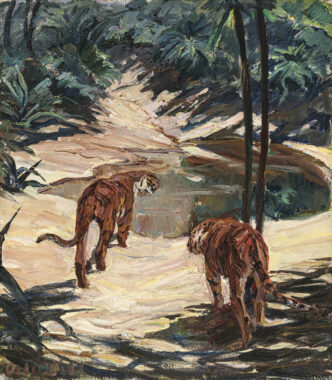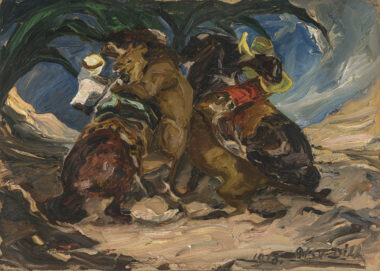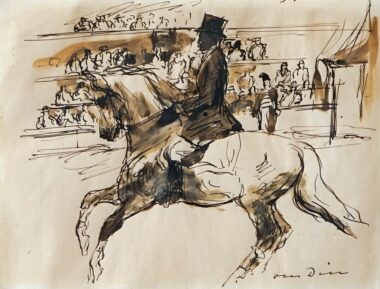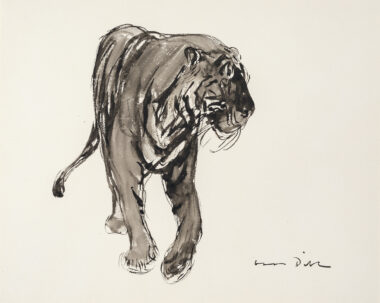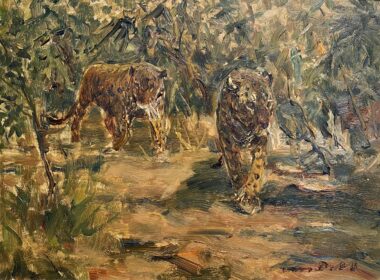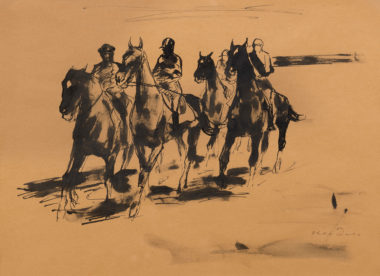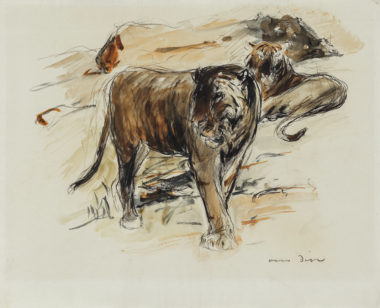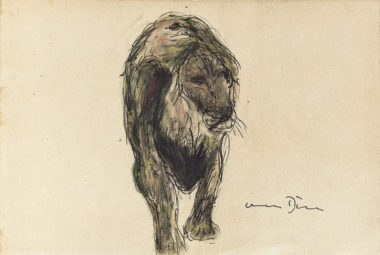Dill, Otto
Available Artworks
Sold Artworks
Biography
Otto Dill
1884 Neustadt – 1957 Bad Dürkheim
Otto Dill showed an early interest in animals of all kinds and displayed a precocious talent in drawing. The support of a patron enabled him to enrol at the Munich Academy of Art in 1908. He entered the master class of the animal painter Heinrich von Zügel and also had his own studio. Like his fellow students Dill was taught to paint en plein air and was trained in life drawing under natural light, whereby particular emphasis was placed on anatomical accuracy and posture. Departing from a Realist approach, he soon adopted the style of Impressionism practised by many other Munich-based painters at the turn of the twentieth century.
In 1912, Dill began to contribute regularly to the exhibitions of the Munich Secession. He excelled in equine motifs and also specialised in depictions of beasts of prey. On his frequent visits to the Munich Zoo he studied tigers, lions and panthers and observed the menagerie animals at the Circus Krone, a Munich-based circus that is still one of the largest in Europe. Dill usually portrayed his animals in the supposed landscapes of their natural habitat, depicting them while feeding and as they roamed the steppe or lay in wait for their prey. His predilection for close-up viewpoints and spatial compression lends his images dynamic tension. The energy and freedom of his brushwork heightens the vibrancy of their impact. He made frequent use of impasto and employed a generally muted palette.
In World War I Dill served in a cavalry regiment. This provided an ideal opportunity to gather extensive study material. In 1917 he began to paint motifs from horse racing and polo, subjects which the Berlin-based Impressionist Max Liebermann had adopted several years earlier. The fascination of the racecourse with its elegant ambience and atmosphere of suspense and excitement quickly captured Dill’s imagination. His images focus on the sporting performance itself. His virtuoso portrayal of horse and rider in motion and his incisive interpretation of the psychological factors of horse racing bring the momentum of the race alive.
After World War I Dill achieved broad recognition and his successes enabled him to fulfil a lifelong wish to visit Africa. A first trip took place in 1924. In the same year he was named Professor at the Munich Academy. The wealth of impressions gained in Libya inspired varied imagery that included scenes which reflect something of the European yearning for the exotic depicting Arab riders and lion hunts. In the 1920s he also travelled in France, Spain and Italy. Discovery of the ever-changing landscapes of the Mediterranean caused his brushwork to loosen and his handling acquired a more impressionist flavour. In 1929, he visited Africa for the second time. Following the example of Macke and Klee he explored Tunis and its surroundings, where he developed a fascination for the region’s untouched nature and its indigenous culture. His output of sketches made before the motif was extremely prolific and served him over the years as study material for numerous paintings.
In 1930, Dill finally left Munich and moved to Neustadt in the Pfalz region. His extensive output of images of lions earned him the nickname Löwen-Dill. He repeatedly returned to motifs he had painted earlier in his career and also produced a large body of landscapes. In 1941 he settled permanently in Bad Dürkheim, where he was to spend his final years.
PDF Download